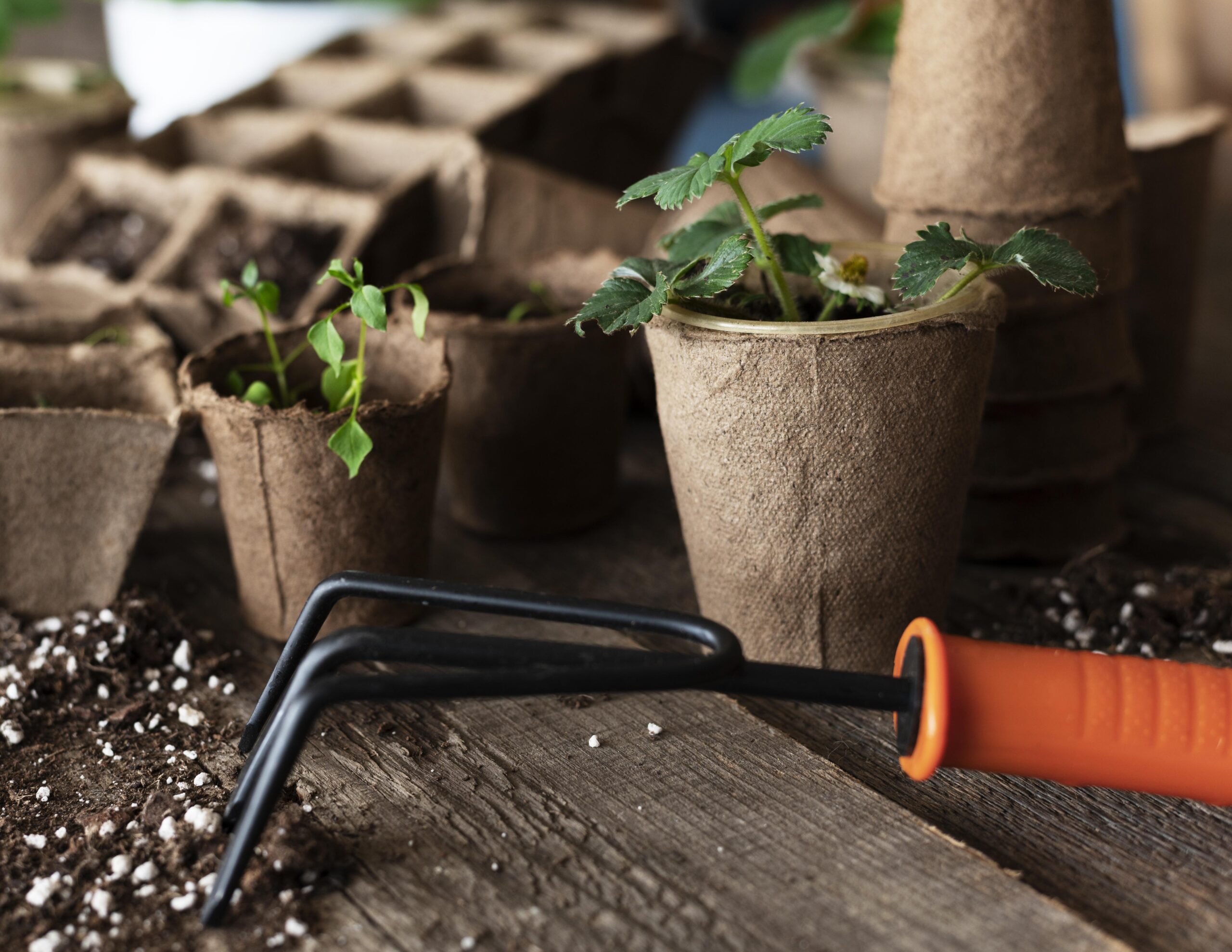
Indoor gardening has seen a huge rise in popularity, and it’s easy to see why. With more people spending time at home, turning your living space into a thriving green oasis offers big rewards—from cleaner air to better moods and even less stress. But if you’re just getting started, it’s common to hit a few bumps in the road.
Many beginners fall into the same traps that end up costing them time, money, and motivation. That’s why this guide covers the most frequent indoor gardening mistakes and, more importantly, how to avoid them. Whether you’re looking for healthier plants, a brighter space, or just a new hobby that sticks, knowing what not to do is half the battle. Here are the top 7 mistakes people make when gardening indoors—and the simple fixes to keep your plants healthy and your confidence growing.


Most people think a sunny window can support any indoor plant. The truth is, window light almost never provides enough sun for most houseplants. Even the brightest window falls short by the time sunlight passes through glass, bounces off surfaces, and changes with the seasons. What seems bright to our eyes often leaves plants desperate for energy. Learning what your specific plants need makes all the difference between limp, yellow leaves and lush green growth.
Matching each plant to its proper spot is key. Research your specific plants. Check tags or look up their preferred light level before putting them anywhere in your home. Most indoor plants thrive on 12 to 16 hours of good-quality light each day, with a period of darkness to rest, as outlined in the Ultimate Grow Light Guide for Indoor Plants.
If your plants look droopy, leaves fade, or growth is spindly, chances are they need more light. Here are simple fixes:
Most of all, consider using a grow light.
Grow lights mimic the sun and fill in those gaps where window light fails. Full-spectrum LEDs work well and fit into regular lamp sockets. They’re energy efficient, stay cool, and aren’t an eyesore. For more tips, see this helpful Beginner’s Guide to Choosing and Using Grow Lights.
A small investment in the right light setup will reward you with stronger, happier houseplants all year round. Let your plant’s response be your guide—healthy, robust leaves mean you’re on the right track.
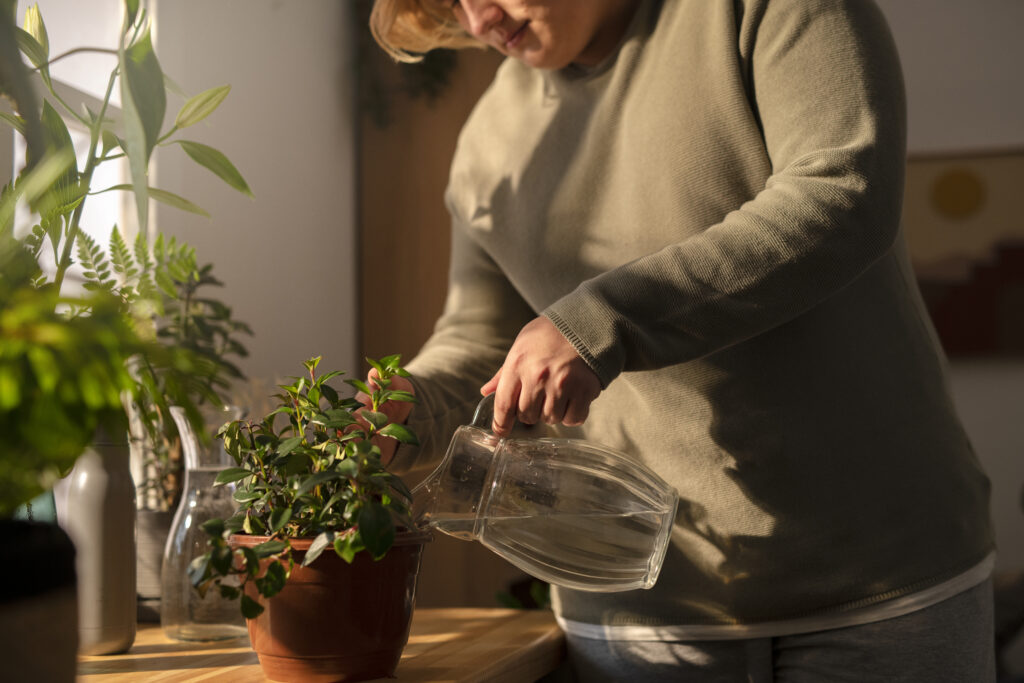
Watering your indoor plants sounds simple, but it’s where most people trip up. Both giving too much or too little water are common issues. Some plants don’t bounce back from a few mistakes, so building good watering habits early on makes all the difference.
Many beginners confuse the signs for underwatering and add more water, making the problem worse. To see the classic signs and how to tell the difference, check this helpful guide on overwatered vs underwatered plants.
Underwatering means roots stay too dry for too long, usually from neglect or using pots that dry out too fast. These plants start to wilt, leaves turn crispy, brown, and feel thin to the touch. Sometimes the soil pulls away from the sides of the pot—another hint it’s bone dry. Plants don’t recover overnight from being parched, and regular underwatering can stunt growth for good.
Root rot is the nasty result of too much water and not enough drainage. Once roots turn brown or black and feel slimy, the plant struggles to recover. If you notice a foul smell or roots that seem mushy, it’s usually too late for a full comeback. Removing the rotted parts and repotting in fresh, well-draining soil is the last shot at saving it.
Great drainage prevents most of these problems before they start. Always use pots with drainage holes—that one step can save your collection. When water can escape and air can reach roots, your plant’s chances of thriving go way up. Avoid “decorative” pots without holes, or place a plastic liner pot inside for extra protection. Experienced growers stress drainage holes are non-negotiable.
Building the right routine makes watering second nature:
Feel the soil before watering. Only add water if the top inch is dry (for most houseplants).
Water deeply but not too often. Let excess flow from the bottom.
Dump out trays after watering so roots don’t sit in water.
Adjust as seasons change—plants drink less in winter and more in summer.
Monitor each plant, as needs often depend on their type, size, and light level.
If you’re ever unsure, check out this essential watering guide for more detailed help. Keeping a mental note of each plant’s “thirst” goes a long way toward a healthy indoor jungle.
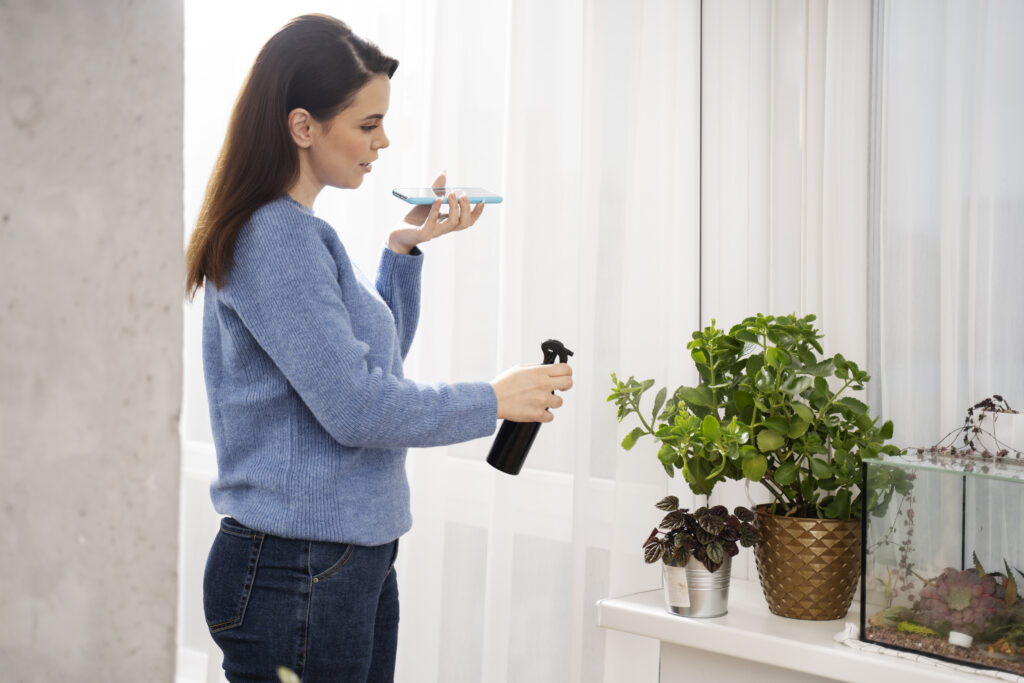
Beautiful green foliage plant sitting next to a humidifier on a wooden shelf.
Many indoor plants come from tropical climates where the air is naturally moist—far more than in the average heated or air-conditioned home. Dry indoor air, especially in winter, can quickly lead to browning leaves, stunted growth, and an overall drop in plant health.
We often overlook humidity because it’s invisible. Heating systems dry out indoor air, and air conditioners strip moisture too. Some plants can survive this, but many popular varieties—like ferns, calatheas, and peace lilies—struggle in dry conditions.
Even just being aware of a plant’s natural habitat helps you recreate those conditions at home.
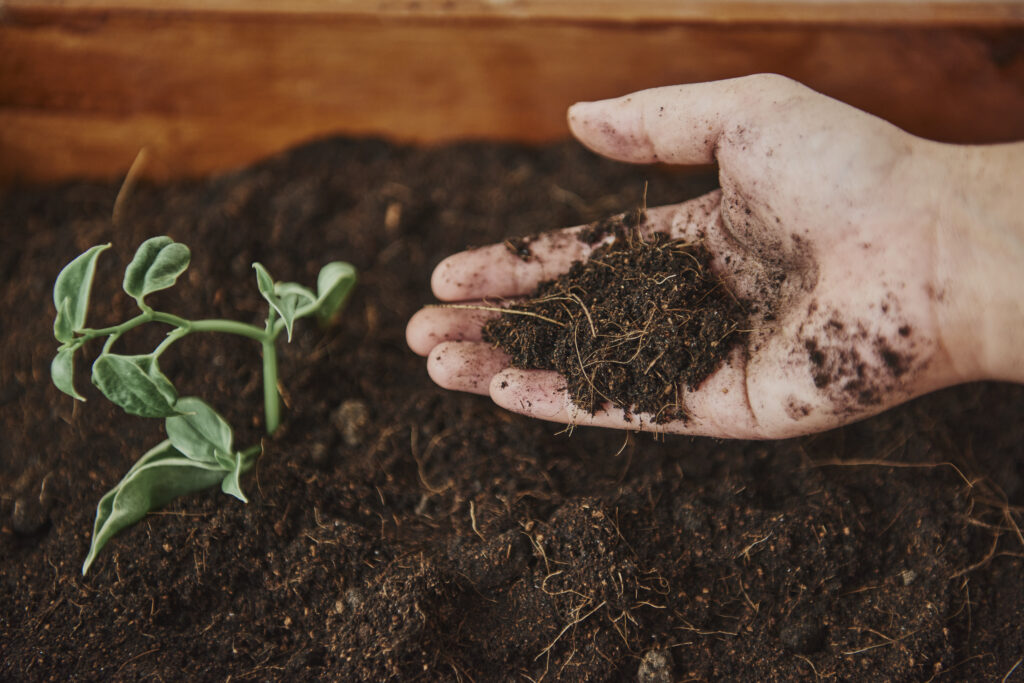
Close-up of potting soil being poured into a plant container with hands and gardening gloves.
Not all soil is created equal. A big mistake beginners make is using garden soil or the same mix for every plant. This leads to poor drainage, compaction, and unhappy roots—especially indoors.
Generic “dirt” may seem like it should work for all plants, but indoor conditions are different. Garden soil is often too dense, retains too much water, and may contain pests or pathogens. Plants like succulents, orchids, or African violets each need very different mixes.
Think of soil as the foundation of your plant’s health—get that right, and everything else follows.
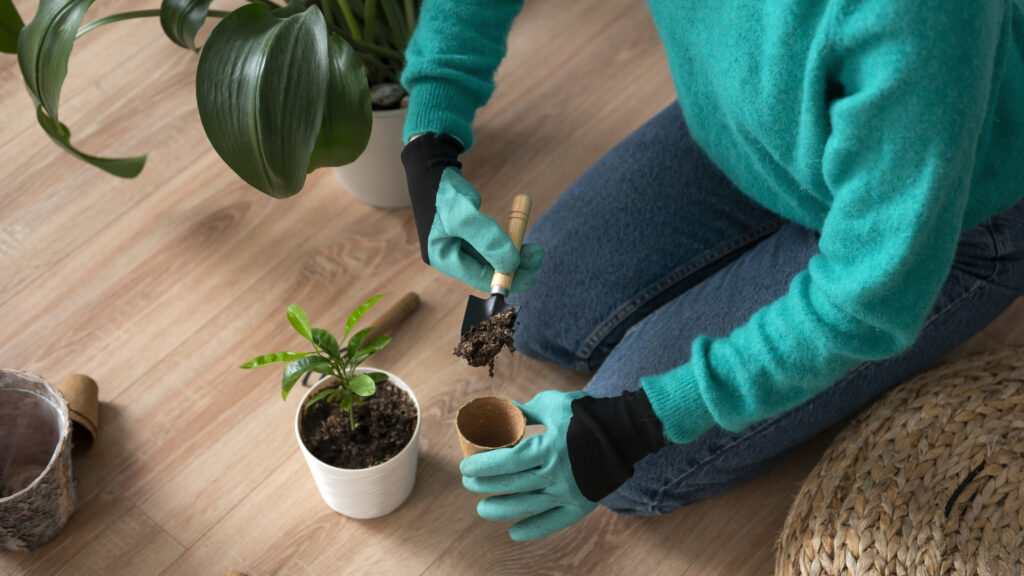
Indoor plant with healthy green leaves next to a bottle of organic fertilizer.
Indoor plants don’t have access to natural nutrients like their outdoor cousins. Over time, the soil gets depleted, and your plants slowly begin to suffer.
Beginners often fear overfeeding and avoid fertilizing entirely. But without regular nutrients, your plant’s growth slows, leaves fade, and flowering stops altogether.
Fertilizer is like a vitamin boost—not essential every day, but definitely necessary to stay strong.
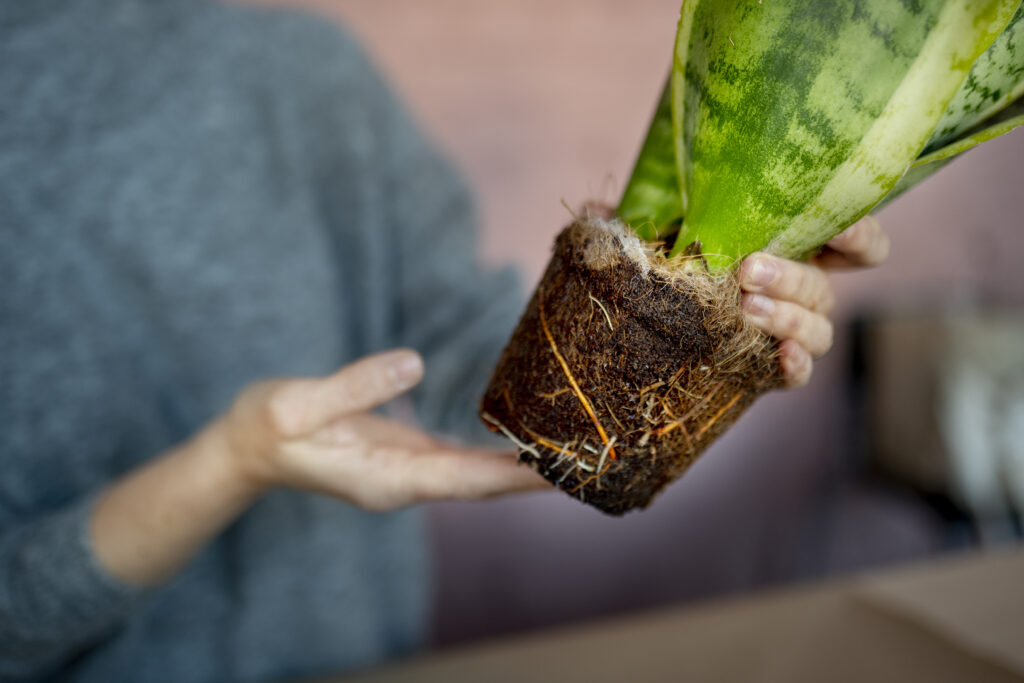
Hands carefully lifting a root-bound plant out of a pot to repot into a larger container.
Many beginners keep their plants in the same pot for years. But as roots grow, they need more space—and fresh nutrients—to thrive. Skipping repotting can quietly stunt a plant’s potential.
Repotting seems intimidating or messy. Some people worry about harming their plant. Others just forget or don’t realize it’s needed until problems show up.
Repotting gives your plant room to breathe, grow, and keep thriving.
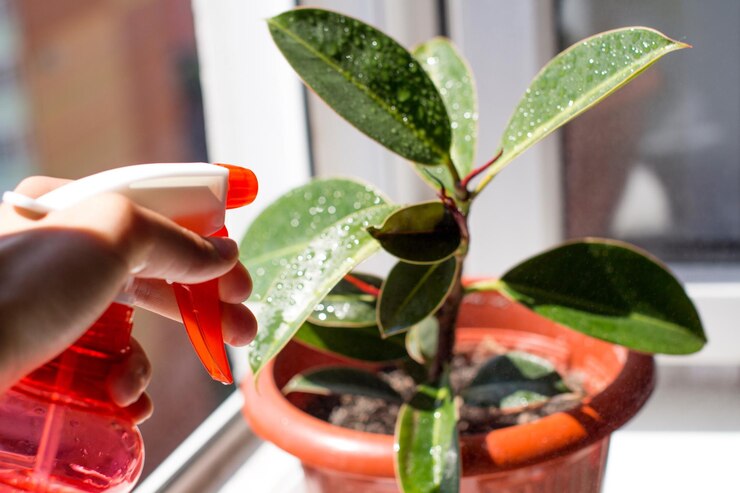
Close-up of a leaf with small white pests and a cotton swab cleaning them off.
Even indoor gardens aren’t immune to pests. Spider mites, mealybugs, fungus gnats, and scale can sneak in—and thrive if unnoticed.
Indoor pests spread fast, especially when you bring in new plants without checking them first. Many bugs go unnoticed until your plant is struggling.
A weekly inspection can catch problems early and save your whole collection.
Mistakes are just part of the journey. No one starts as a perfect gardener—and that’s okay. Indoor gardening is a learning process, and even seasoned growers still make the occasional mistake.
By avoiding these common beginner missteps, you’ll set yourself up for a thriving, lush indoor garden. Take it one plant, one leaf, one watering at a time—and don’t forget to enjoy the process.
The most common mistake beginners make is overwatering their indoor plants. It can lead to root rot, yellowing leaves, and even plant death. Many assume more water equals better care, but most plants prefer their soil to dry out slightly between waterings. Learning to read your plant’s needs and checking soil moisture before watering helps prevent this issue.
If your plant has leggy growth, faded leaves, or slows down in new leaf production, it may not be getting enough light. Even the brightest window may not provide sufficient intensity or duration, especially in winter. Using full-spectrum grow lights or placing your plant closer to a south-facing window can help ensure optimal light exposure.
If your plant has leggy growth, faded leaves, or slows down in new leaf production, it may not be getting enough light. Even the brightest window may not provide sufficient intensity or duration, especially in winter. Using full-spectrum grow lights or placing your plant closer to a south-facing window can help ensure optimal light exposure.

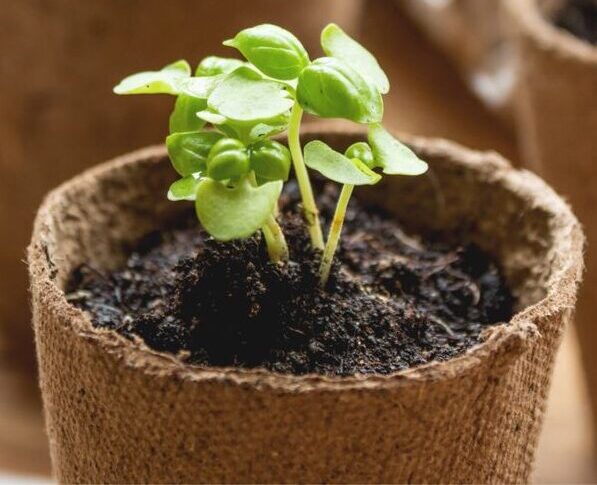
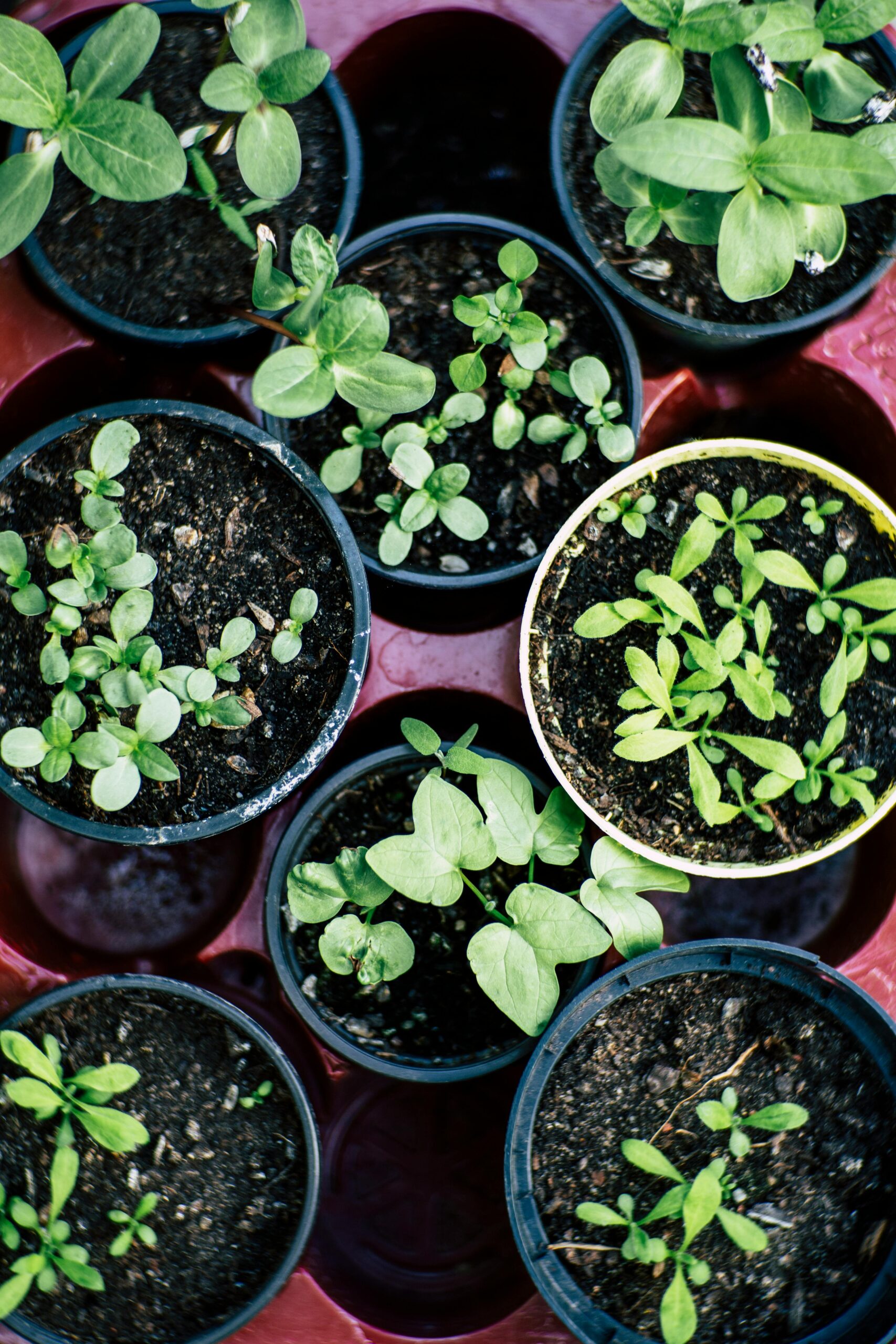
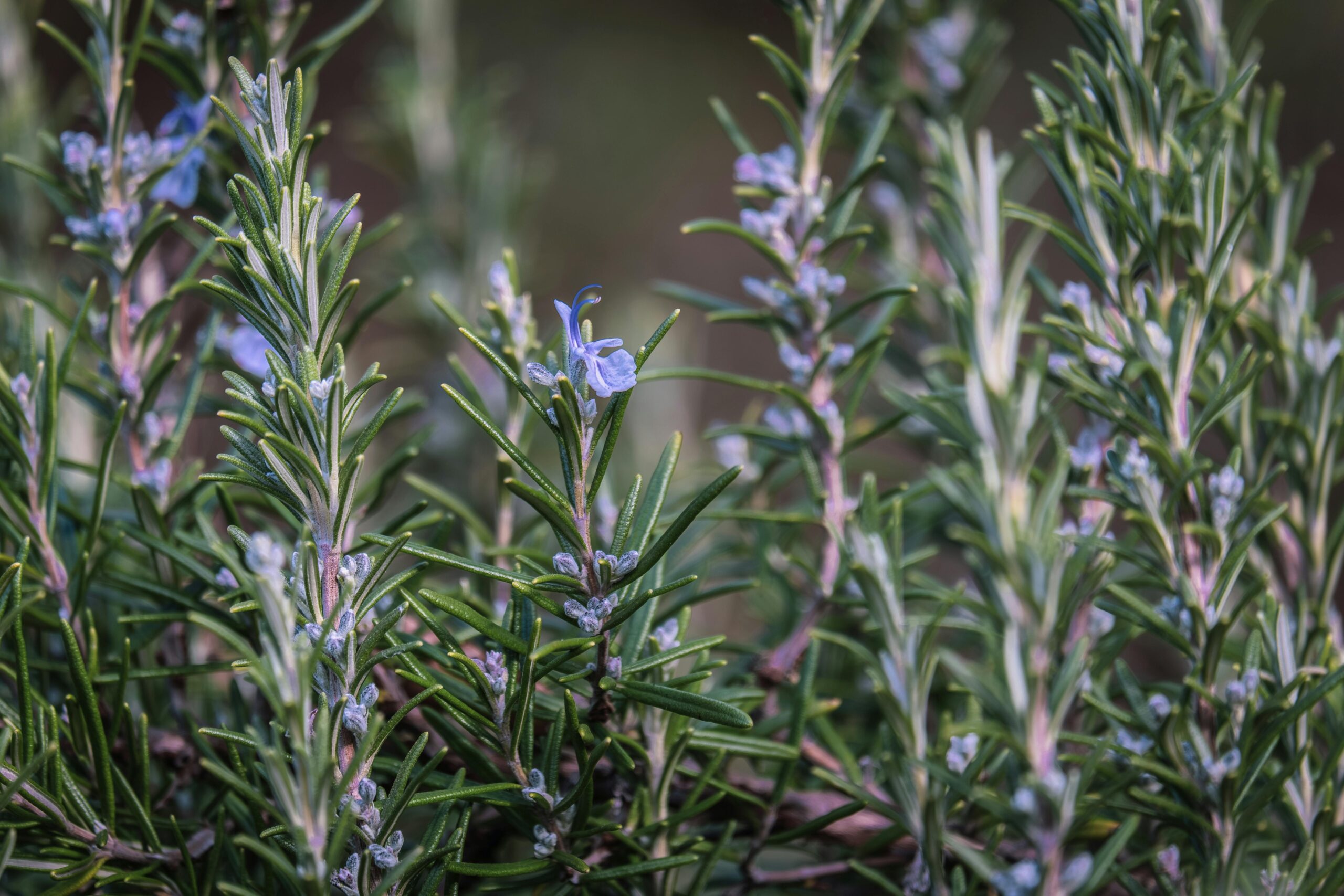
+91-7019960850
sanjeevinigarden@gmail.com
Sanjeevini Garden Products, KAN-4-36/2, Coastal Farms (formerly chicken) road, Padil-Kannuru, Mangaluru 575007
Copyright © All Right Reserved